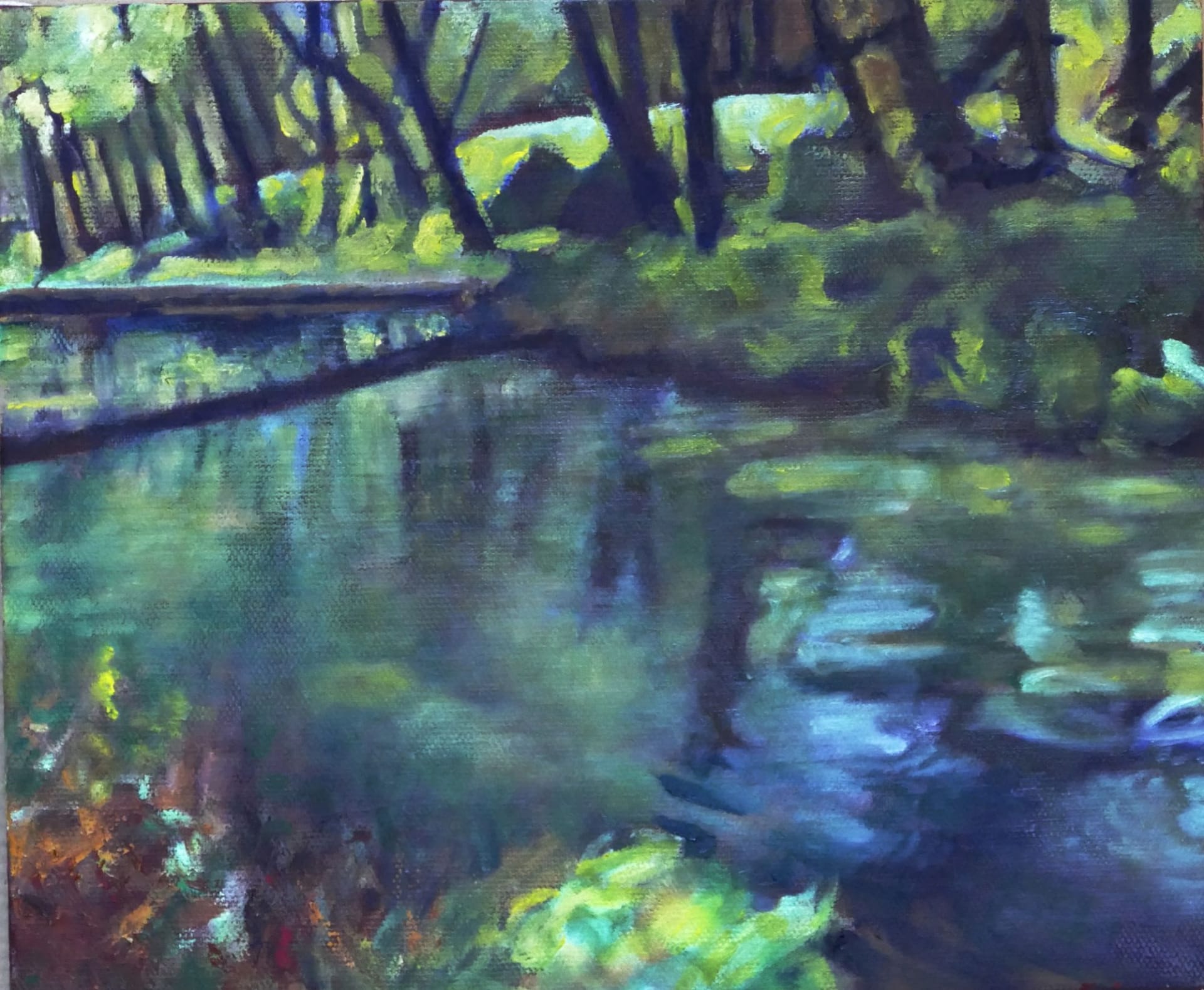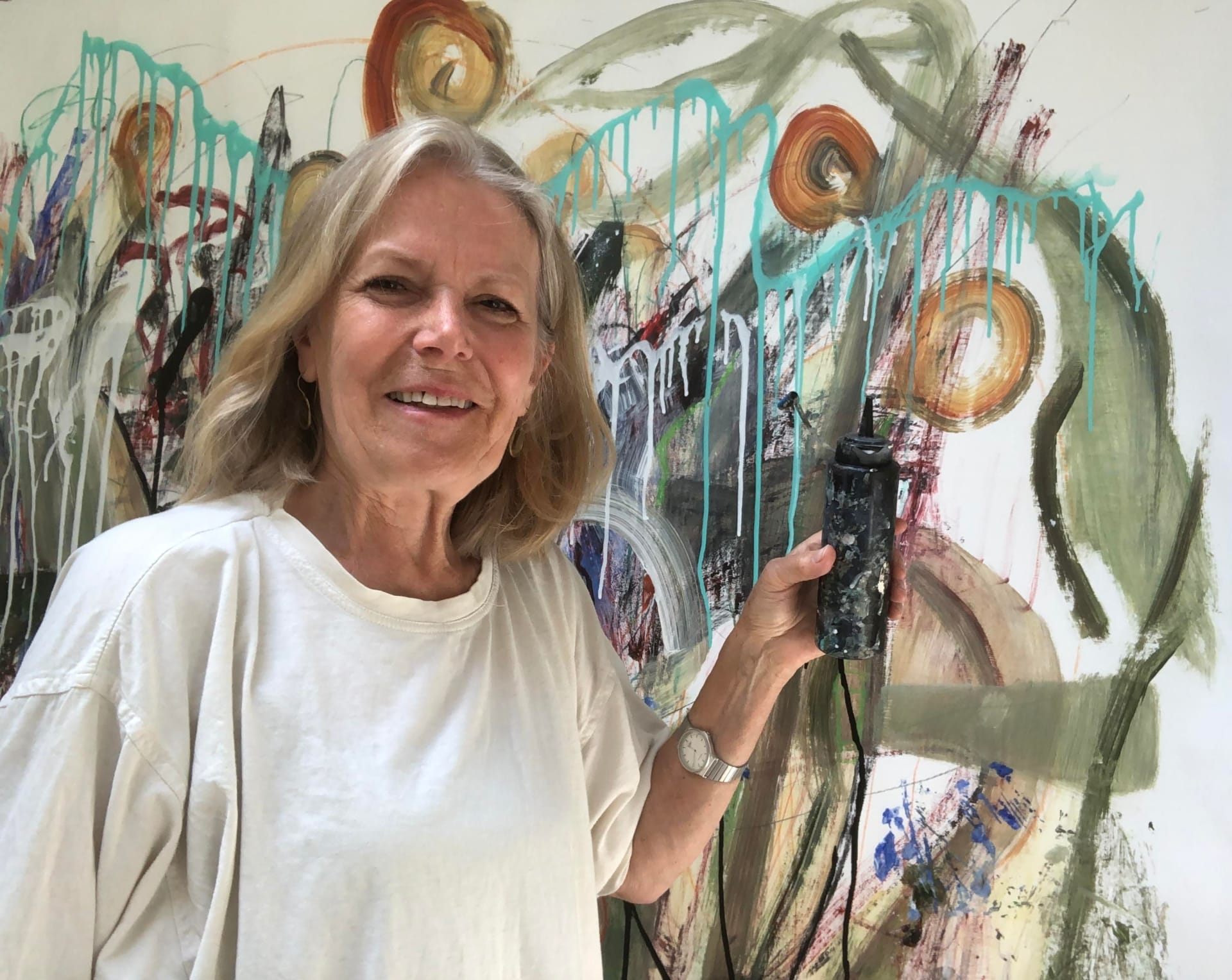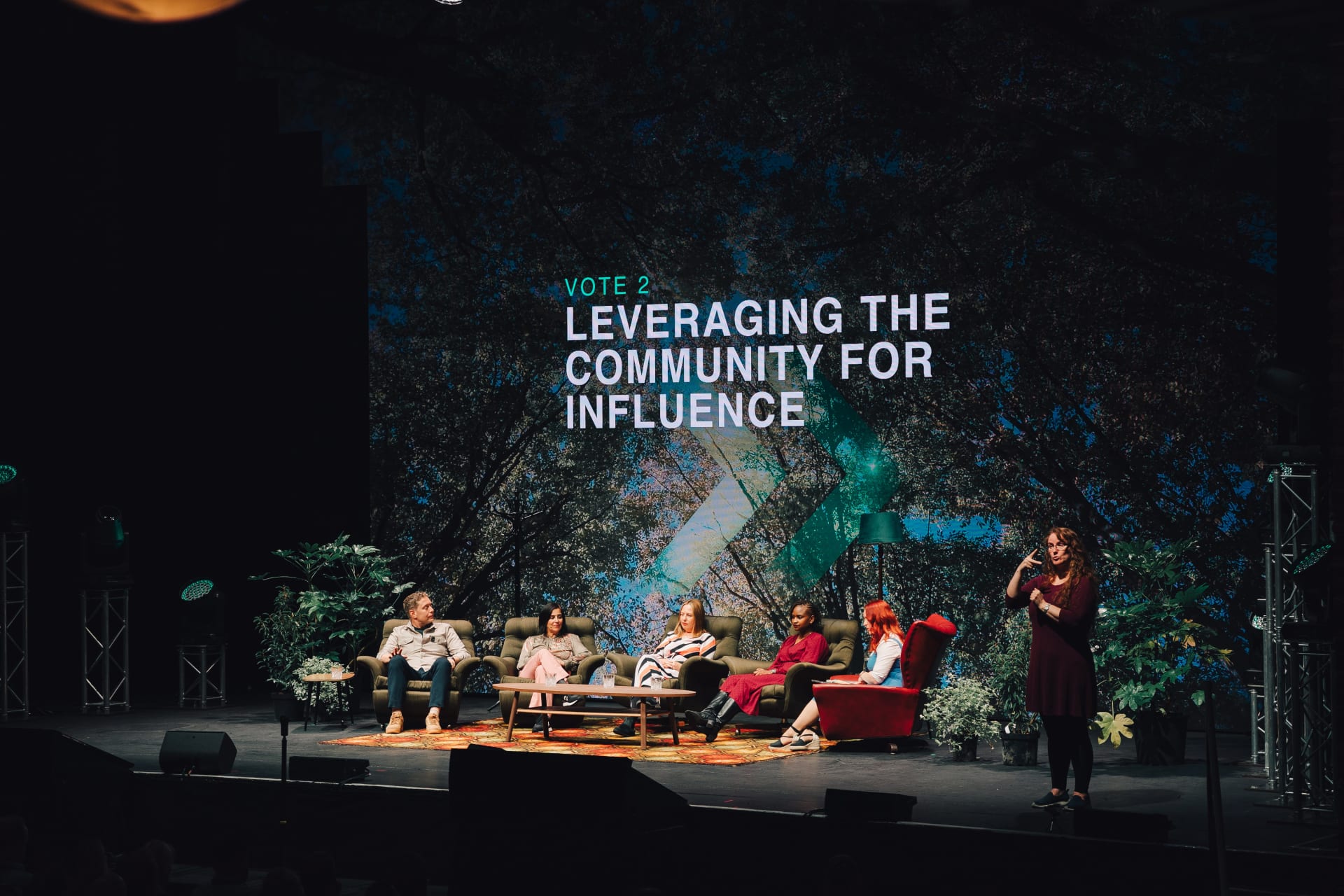One of the pleasures of Oxfordshire Artweeks is taking a village trail and unearthing some marvels along the way.
On the High Street of Shipton-under-Wychwood, a pretty Cotswolds village, you’ll find three artists exhibiting paintings, ceramics and jewellery together at Coldstone Farm (Artweeks venue 395). In her studio, potter Alison Townsley has created a new wheel-thrown collection of practical pottery which includes pieces she has hand-decorated inspired by vintage domino papers; some very simple forms that showcase glaze colours and effects; sets based on a Bauhaus style; as well as a few surprises.
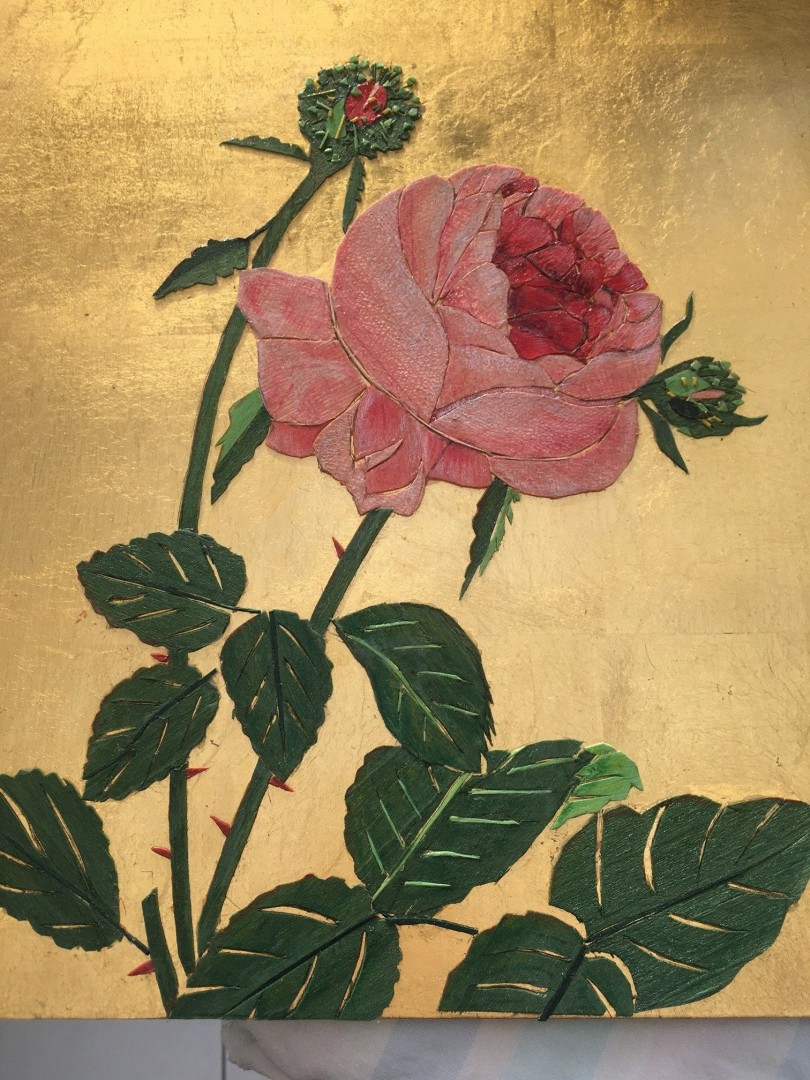
Gabriella Blakey
Just a stone’s throw away in an impressive fifteenth century Tythe at Old Prebandal House, beside the River Evenlode, eleven members of the Oxfordshire Craft Guild present their ceramics, glass, jewellery, textiles and wood in a quality exhibition (Artweeks venue 397). One of whom, Gabriella Blakey, works with wood using with coloured veneers, using intaglio (cutting into wood, in which the design is hollowed out revealing a contrasting colour), appliqué of veneer on wood, and inlay or marquetry. “I love the feel of wood when I work,” she says. “Trees brought us the first fire, the first wheel, the first houses and a surface to paint. And I like to feel part of this tradition."
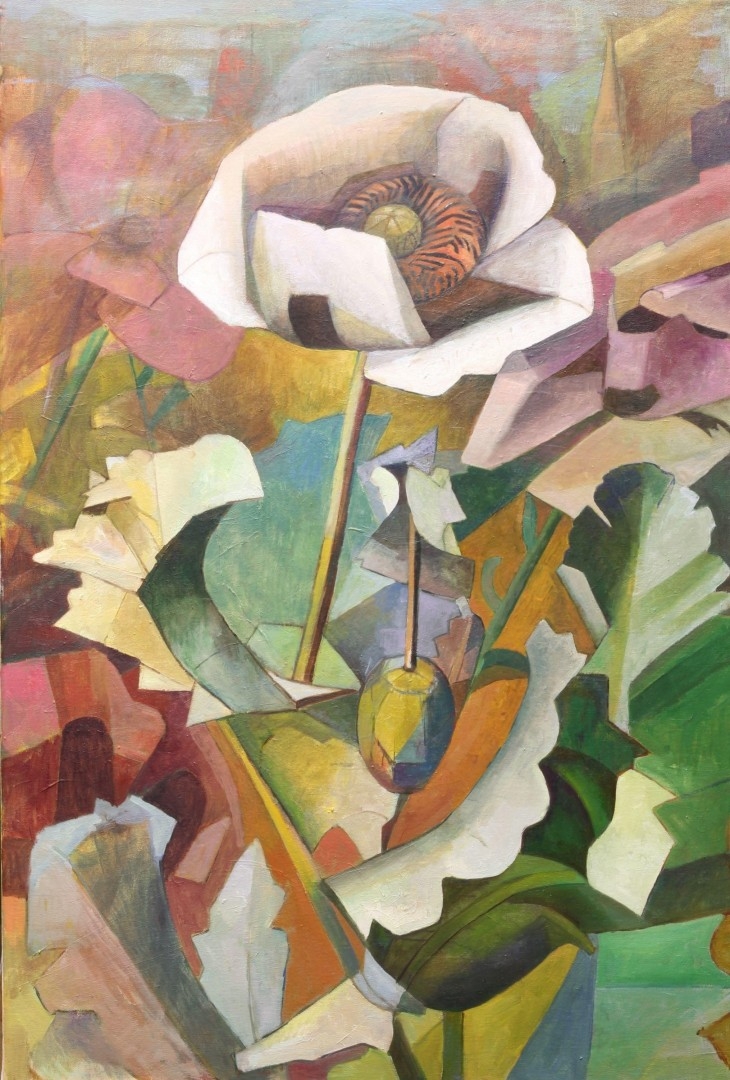
Julia Sorrell
Trees – haunting and sometimes desolate – also inspire some of the art in a neighbouring venue (Artweeks venue 396) where painter Julia Sorrell focuses on careful observation of botanical subjects and the flowers in the woods. She reduces the scenes she sees using warm and cool colours with line, and delights in giving dignity to over-looked subjects. Her husband, furniture-maker Ian Sanders, hand-carves unique tree tables inspired by the trees from which they originate. Crafted from native British specimens, his finished tables are a smooth and flowing tree sculpture as well as a piece of decorative furniture. Ian was originally a botanist, studying plant growth and form: his gloriously timeless pieces reflect his respect for the natural world. Each could almost have been carried from the woods – or a fairytale – in their final form; a small tree or ancient roots, a unique piece of both time and nature for the home.
There’s lots more to see just down the road at FarmEd at Honeydale Farm; an organisation that is passionate about regenerative agriculture, farming with nature and producing great food on its diverse 107-acre mixed farm. For Artweeks they’re hosting twelve very different artists in their eco-buildings, all of whom share their passion about the wellbeing of the population and the world.
The exhibition includes an interesting series of work, The Glyme Lane Project – a Moment in Time which has drawn inspiration from a tract of land in Chipping Norton: its allotments, beehives, a Millennium Memorial Wood, track and farmland. Spanning a year of changing seasons and weather, the artists show what this area, with its ancient track, longstanding allotments, organic farmland and refuge for nature, means to local people. They have recorded it at this moment in time, when local daily walks, gardening, food production and wildlife are so important for the community’s wellbeing. The exhibition includes dynamic figure drawings of allotment holders and beekeepers, paintings of the landscape, Raku-smoked ceramics and stained glass accompanied by poetry, a book of sheds and sound recordings.
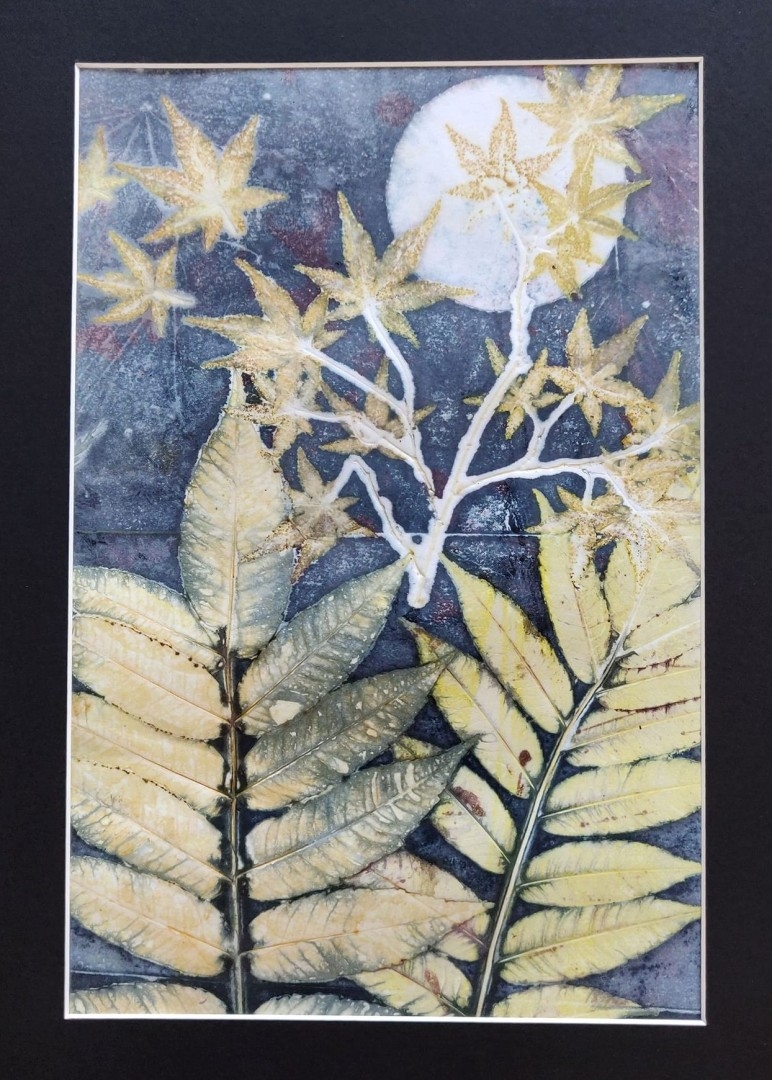
Caroline Nixon
Here, too, you’ll find textile and mixed media artist Caroline Nixon, who captures the beauty of nature using the natural pigments and imprints actual leaves – no synthetic ink, dyes or silk screens are involved. In a process known as ‘ecoprinting’ or botanical contact printing, a combination of pressure and steam coaxes pigments from the leaves into the fabric. These natural colours are soft and harmonious, and the process is entirely non-polluting, respecting the environment, and yet creates textiles that are washable and colourfast. From these textiles Caroline makes clothing, scarves, home textiles and wall art.
Alongside is Carol Crowdy, a felt-maker and spinner who is fascinated by the huge variety of British native sheep breeds and the amazingly different properties and appearance of their fleeces. “Sheep fleece is very under-used and has enormous advantages over man-made materials - it's insulating, fire-retardant and sound absorbing. It sucks up moisture whilst retaining its insulating properties and feels warm and cosy,” she explains. “That’s why it has been used in human dwellings for thousands of years, and then, when a wool object is no longer useful, it can simply be composted.”
For Artweeks she is creating felt lamps, vegetarian sheepskin rugs & seat pads (these are made with a felt backing, so the sheep is merely shorn). She has a collection of felt cushions stuffed with a Southdown fleece which together create a relaxed and cosy looking house and outdoor space.
For something rather different – yet equally natural – look out for Carol Harvey’s mixed media art which uses handmade, natural art materials, to capture the colours, textures and feeling of nature. Her work describes a specific habitat, often in the form of a biome box. “It is quite a challenge getting the compositions on all six sides to work and flow together, but very satisfying,” she smiles.
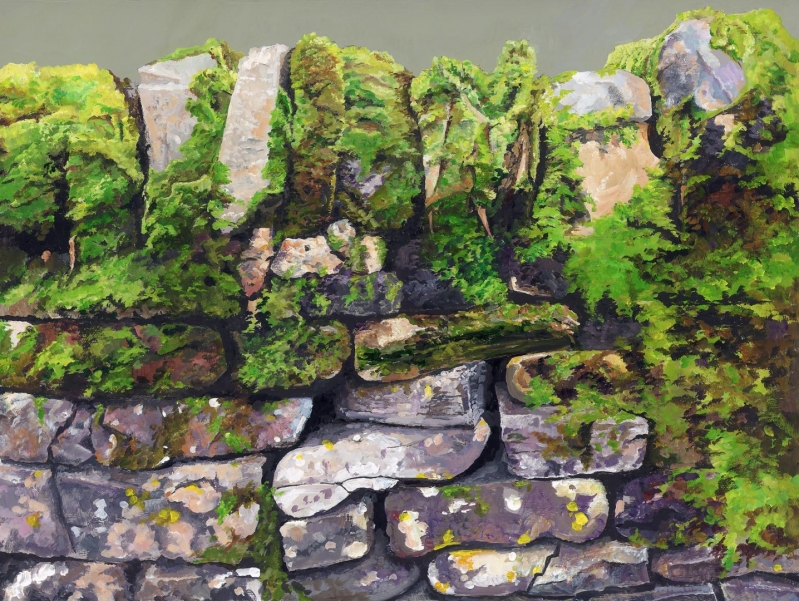
Rosemary Atkins
More focus on nature is to be found in Rosemary Atkins’ paintings and prints which show the modest beauty of dry stones walls, with old gates and lichen creeping upon them, whilst Penelope Fulljames presents a series of large works on a woodlands and forests theme. These promise an escape to a place of beauty and enchantment in the natural world, inspired by spots of peace and harmony found locally. Look out, too, for a single striking painting by Charlbury artist Elaine Kazimierczuk. In common with several of the artists taking part at FarmEd, she is also opening her studio for Artweeks.
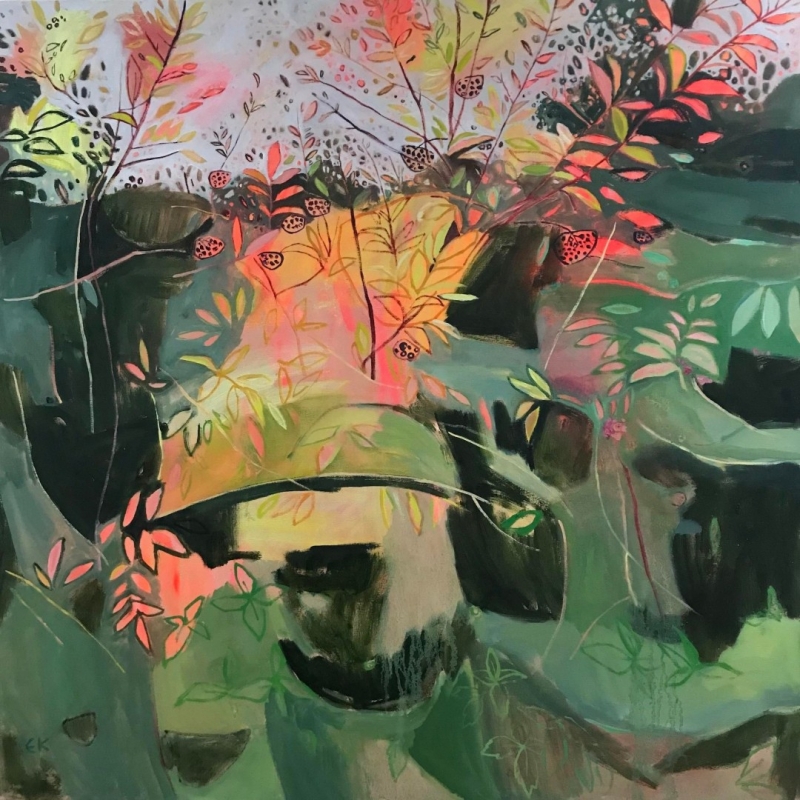
Elaine Kazimierczuk
Kazimierczuk focuses her painting on habitats such as wildflower meadows, hedgerows, cottage and botanic gardens. More recently, her work explores the lush temperate rainforests found at a series of locations across the British Isles. A keen supporter of initiatives that manage and support fragile ecosystems, her aim is to represent nature with its intricate assembly of wild beauty. Her landscape paintings, though semi-abstract, interweave direct observation with imagination to conjure up the essence of a place; immersing us in the beauty of the landscape and evoking the vitality of the natural world. The scale of her canvases varies, from intimate studies that can sit on a bookshelf to large pieces that fill entire walls and bring the tranquility and joy of the great outdoors into the heart of the home.
For more information on these venues and hundreds more visit artweeks.org

